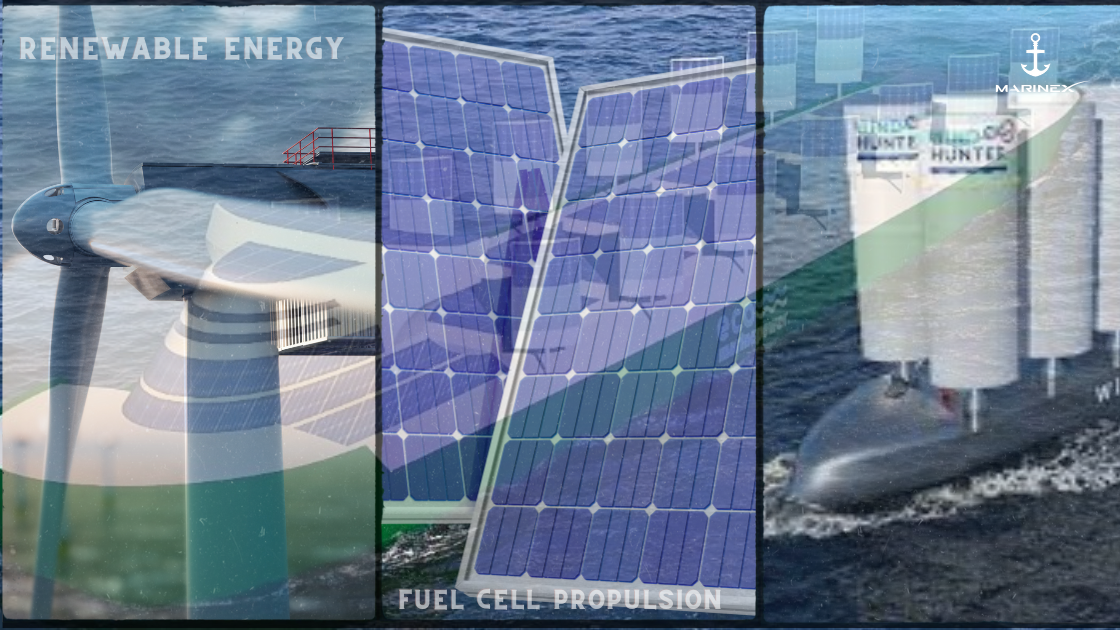Harnessing the Power of the Sun and Wind: The Future of Marine Propulsion

In the quest to reduce fuel consumption and emissions in the maritime industry, one promising avenue is the integration of solar power systems into ships. Recent advancements in solar cell and photovoltaic module technologies have made solar power a cost-effective option for fuel reduction, particularly on smaller vessels such as pleasure boats, ferries, and tourist ships.
However, the potential for significant fuel savings on larger ships solely through solar power remains limited.
Marine Solar Power System: Reducing Fuel Consumption Onboard Ships
Utilizing solar power presents another avenue for reducing fuel consumption aboard ships. Recent advancements in solar cell and photovoltaic module technologies have made solar power a cost-effective option for fuel reduction on pleasure boats, ferries, and tourist vessels. However, the fuel savings achieved through solar power alone on large ships remains relatively modest.
Solar-Powered Electric Ship System
Under the current innovative technology guidelines, various technologies are covered. Instead of opting for ships equipped solely with rigid sails or solar panels, a more effective approach might involve designing a system capable of harnessing the combined power of wind and sun.

However, developing such a solution poses challenges related to the practicalities of using sails and solar panels on large powered ships navigating the harsh marine environment.
A marine solar power system constitutes an integrated, class-accepted system that may encompass a marine computer, battery chargers, batteries, marine-grade solar panels, and interfaces to other equipment and sensors.

The energy harvested by the marine solar panel array or string of photovoltaic (PV) panels can power a DC load, provide backup or emergency power, or connect to an AC load via an inverter. Thus, any ship or vessel can tap into the clean and renewable energy provided by the sun.
The marine solar power system includes the flexible management and automation system (MAS), a compact marine computer that monitors the performance of the solar power array and battery pack. The MAS logs data, controls equipment activation, calculates vessel emissions, records fuel consumption, and displays system alarms. Additionally, the MAS can monitor system performance and alarms from a wide array of other equipment and sensors installed on ships.
The solar power package is suitable for new-building projects and retrofitting to existing vessels. Moreover, a marine solar power system or array using the MAS can integrate with wind power devices, including Energy Sail technology.
Advantages and Benefits of Solar Power on Ships:
- Suitability for retrofitting to existing ships or inclusion in new shipbuilding projects*
- Enhanced system output when combined with efficient marine LED lights, potentially increasing output by a factor of three or more
- Compliance with Classification Society requirements, with the basic configuration complying with Class NK guidelines
- Utilization of special lightweight and flexible solar panels, allowing for increased installation options on ships
- Potential use as a power source for emergency lighting, outlasting traditional backup systems
- Clean power source, particularly beneficial in ports or populated areas
- Emissions-free power source*
Disadvantages of Solar-Powered Ships:
- Installation of a practical number of solar panels can be costly
- Conventional solar panels occupy significant deck space
Harnessing Wind and Solar Power: A Modern Concept in Marine Propulsion
For millennia, the power of the wind has propelled ships and boats across the seas. However, with the advent of steam and internal combustion engines in the 19th century, sail power experienced a sharp decline. Today, there is a resurgence of interest in utilizing sails for commercial vessels of all sizes.
Simultaneously, advancements in solar panel technology have made it increasingly practical and cost-effective to incorporate solar power solutions on vessels.
These rigid sails are integral components of Aquarius MRE, an integrated solution that incorporates marine computer systems and energy storage modules.
When discussing the utilization of wind power in modern marine propulsion systems, it is essential to consider aerodynamic efficiencies, particularly the tip speed ratio—the ratio of the airfoil's speed through the air to the wind speed. While foiling catamarans, like those in the America's Cup race, can achieve tip speed ratios well above one and higher propulsion efficiency, this efficiency diminishes when applied to laden cargo ships or vessels operating under suboptimal conditions.
Nevertheless, there are promising technologies such as new generation wind sails, Flettner rotors, or power generation plants that can complement traditional marine propulsion systems, reducing operational costs and emissions.
Hybrid Marine Power & Propulsion
Fuel savings and environmental benefits can also be achieved through hybrid marine power and propulsion technologies or all-electric marine propulsion systems. These concepts, while not new, have become more efficient and cost-effective due to recent technological advancements.
Today's eco-friendly marine propulsion solutions integrate motor/generator sets, advanced power management systems, cutting-edge energy storage technologies, and solar and wind power solutions.
Hybrid marine power solutions can be configured to eliminate on-board fossil fuel engines or generators, with batteries recharged via a combination of on-board solar panels and shore power. Moreover, shore power can be sourced from wind power or solar power generating facilities, creating a water transport solution powered entirely by renewable energy.
By leveraging these renewable energy sources alongside innovative propulsion technologies, ships can navigate the seas with greater efficiency, lower emissions, and reduced reliance on fossil fuels.
To access the full blog, subscribe to MarineX Premium Plans and elevate your maritime knowledge to the next level. Gain the MarineX Edge for comprehensive insights into all things maritime.